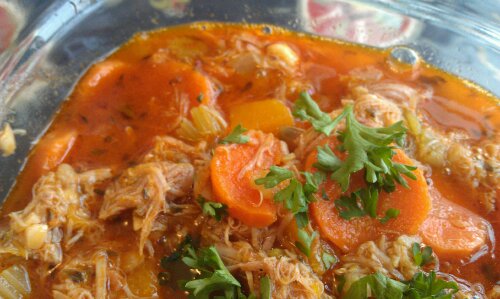![By NMajik at en.wikipedia (Own work (Original caption: “Source: Self”)) [Public domain], via Wikimedia Commons](https://thehomeschoolingdoctor.files.wordpress.com/2017/01/almonds.jpg?w=625)
By NMajik at en.wikipedia (Own work (Original caption: “Source: Self”)) [Public domain], via Wikimedia Commons
When I used a form of SCD for my gastrointestinal issues (not inflammatory bowel disease), I ran into a few issues and the diet stalled for me, even regressed. I don’t give up easily when I think there’s a way to accomplish something, and so I played around with the diet and I read what other people trying the diet were saying. I’ve compiled a little list of things to try if SCD is not working for you.
Remember, nothing here on my site is medical advice and should always be investigated and explored. Talk with your doctor and maybe get a referral to a dietitian for help. This is the internet. Believe nothing. Question everything.
Eliminate “pesky” foods that are allowed on the diet: nuts, peanut butter, eggs, dairy. Foods that we know cause life-threatening allergies can also cause other immune reactions in the body that aren’t nearly so serious. Even though they aren’t life threatening like true allergy, they still can cause bad, uncomfortable immune reactions, especially at the interface of the gut lining (but not limited to the gut lining).
Common food allergens like nuts, peanuts, dairy, and eggs are notorious for more than just anaphylaxis and hives! If you read research studies, you’ll see them coming up again and again for things like migraines, eosinophilic esophagitis, and eczema! I feel like medical doctors only communicate the life-threatening aspect of these foods (which is super important, of course), and ignore their involvement in so many other disease states. So people walk around treating their problems with creams, puffers, and pills, when they could be investigating their diet.
The Specific Carbohydrate Diet allows eggs, almonds, nuts, peanut butter, homemade yogurt, cheeses and butter. All good foods! But also all known top allergens that can perpetuate illness in susceptible people.
(Coconut is not necessarily a top 8 common allergen, but I’ve read of many SCD’ers having trouble with it, particularly the flour. I’d add it to the “pesky” list.)
How do you know which “pesky” to take out? Well, you can start with the one you have a sneaky suspicion about. Or you can see if your doctor will order you an IgG blood panel (which has such variable results for people), although you need to know up front that many conventional medical doctors disapprove of them. Or you can eliminate them all, and slowly bring them back in one at a time.
Whatever you do, be smart and make sure you’re getting any nutritional deficits accounted for!
Cut down on baked goods. When people switch to the SCD, they often, understandably, try to recreate the diet they had been eating: muffins, breads, pancakes, and cookies. ALL of these things can be made on the SCD and are super tasty! However, the ingredients for them come from the “pesky” category (almond flour, eggs, butter, and so on), so they really shouldn’t be routine food fare. They also come with a big whop of sugar; yes, I know it’s honey, but fructose in excess has its own negative effects. Baked goods are great as a transition to ease families into eating more real, wholesome foods. If my kids hadn’t had a baked good, I would have had some runaways.
In any area of the diet you may be lapsing and skimping in, get strict again. Get back to eating only the legal foods with “no exceptions.” It’s so easy to let products back into our kitchens. A little guar gum here. A little BHT there. Some maltodextrin there. Some modified food starch. And then you’ve walked down the slippery slope and fallen. Crash and burn for a few little ingredients that really weren’t even that important to you!
Studies indicate that emulsifiers may cause problems for inflammatory bowel disease, so if you’re struggling, get the “small stuff” back out!
Alternatively, perhaps the idea of “being strict” is sabotaging adhering to the diet well, and adding in a few select real, whole, foods, like rice and/or potato may be helpful in overall adherence to the diet.
Even though certain foods are not allowed on the diet, that doesn’t mean that a person’s body and disease will not tolerate them. Yes, it’s best to adhere to the diet as it is written, but it is VERY likely that adjustments will have to be made. Remember, the diet is not magic. It can’t prophesy exactly what your body will and will not tolerate. If adding in a food that may not be problematic anyhow is the price to pay for keeping on the diet instead of giving up completely, it’s worth a trial! Make sense? (But do talk with your healthcare provider who is overseeing your diet. They might have some other tips they’d like you to try first.)
Elaine Gottschall, the author of the diet, did not intend for The Specific Carbohydrate Diet to be a forever diet. She advocated moving off the diet once symptoms were well-controlled.
Read about FODMAP foods. Foods have natural sugars and molecules that we don’t absorb and that feed our gut bacteria. It’s actually a good thing. But sometimes, guts that are compromised need a break from these too, or else they’ll have painful bloating, gas, diarrhea, and/or constipation. FODMAP stands for fermentable oligosaccharides, disaccharides, monosaccharides, and polyols. FODMAP foods can cause pain outside of actual inflammatory disease and would be worth exploring. I have noticed that many people suggest cutting down on fruit if the SCD isn’t working well for you, and I can see where certain fruits will exacerbate a FODMAP condition. Here’s a good site with FODMAP information. Just click on the symbol, and it brings up a nice handout.
Take away the power struggle. When it comes to kids, they MUST understand the diet and their bodies. Kids usually make good decisions when they’re given good information and see the impact of certain foods on their bodies. Make it a point to understand the diet and read the book, then paraphrase it and explain it to your child. Kids need empowered, not controlled. Sometimes our fears lead to a strong need to control, but kids will buck this. Well, at least mine do!
The mind-body idea. We KNOW that there is a BIDIRECTIONAL process between the brain and the gut and conversely, the gut and the brain. It works from the bottom up. And the top down. If you’re ready to take it beyond diet and supplements, maybe it’s time to move inward. Google things like mindfulness and IBD. Or hypnotherapy and IBD. See what you think. This area has definitely piqued my interest. It takes me months and years to write, so you’ll definitely want to read in this area before I get any posts up on it!
Well, that’s it for today. I’m sure there are other tweaks. I think the best tweak is to know you’re going to be okay. Know that nothing can get you, because you’re bigger inside than anything you can comprehend. If you’re on the religious side, know that you’re a spiritual being forever with a human body but fleetingly.
Feel welcome to post any tweaks you’ve found beneficial.
Over.
Terri
 I’ve fallen completely in love with nutrition. So I decided to do an interview with myself about the first, crazy, named diet I ever tried: GAPS. Read with a mild sense of humor at times. Please don’t use anything on my site as medical guidance. (I always say “please,” but I mean it…) Use what I write to scoff. Laugh. Plagiarize. But not as medical treatment or recommendations. Even thought I think I’m right, you should know that I’ve been known to lock myself out of my house, leave fully loaded grocery carts standing in the parking lot, and call my husband by my first real boyfriend’s name.
I’ve fallen completely in love with nutrition. So I decided to do an interview with myself about the first, crazy, named diet I ever tried: GAPS. Read with a mild sense of humor at times. Please don’t use anything on my site as medical guidance. (I always say “please,” but I mean it…) Use what I write to scoff. Laugh. Plagiarize. But not as medical treatment or recommendations. Even thought I think I’m right, you should know that I’ve been known to lock myself out of my house, leave fully loaded grocery carts standing in the parking lot, and call my husband by my first real boyfriend’s name. Are you struggling with any Thanksgiving recipe adaptations? Have an awesome adaptation discovery you’d love to share? Please stop by today’s post!
Are you struggling with any Thanksgiving recipe adaptations? Have an awesome adaptation discovery you’d love to share? Please stop by today’s post!







